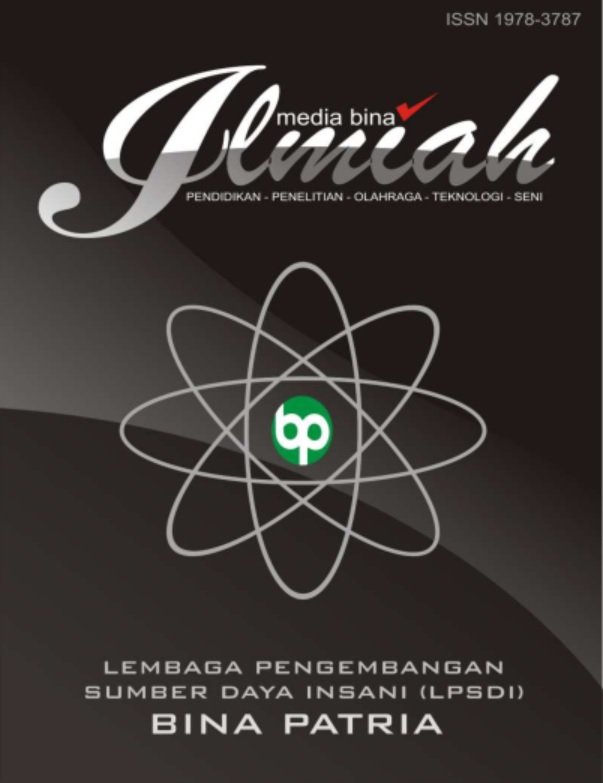OPTIMASI TATA LETAK STASIUN KERJA DAN PENINGKATAN KINERJA OPERATOR MELALUI ERGONOMI DIGITAL DAN DESAIN BERBASIS SIMULASI DALAM LINGKUNGAN INDUSTRY 4.0
Keywords:
Digital Twin, Ergonomics, Industry 4.0,, Workstation Redesign, SimulationAbstract
This study explores the integration of digital ergonomics and simulation-based design to optimize workstation layout and enhance operator performance in Industry 4.0 environments. A mixed-method approach was employed, combining digital time study, ergonomic risk assessments, and virtual simulation modeling to evaluate and improve work processes. The research found that ergonomic redesigns, supported by digital twin technology, resulted in significant improvements in both operator comfort and task efficiency, with a 16.6% reduction in cycle time and a 16% increase in work efficiency. RULA scores were reduced from 6 to 3, indicating a significant decrease in ergonomic risk. This study demonstrates the potential of predictive ergonomics and user-centered design in optimizing workplace safety and productivity within the context of modern manufacturing systems. The findings contribute to data-driven design methodologies that can be applied to a variety of industrial settings.
References
Amaliah, R., & Achiraeniwati, E. (2023). Perancangan fasilitas kerja ergonomis menggunakan metode antropometri pada pekerja pencucian kedelai untuk mengurangi risiko musculoskeletal disorders (MSDs) di rumah tempe Zanada. Bandung Conference Series: Industrial Engineering Science, 3(1), 6501. https://doi.org/10.29313/bcsies.v3i1.6501
Andersen, R., Ketelsen, C., Nielsen, K., Andersen, A., Brunoe, T. D., & Bech, S. (2018). A conceptual digital assistance system supporting manual changeovers in high-variety production. IFIP Advances in Information and Communication Technology, 449, 449–455. https://doi.org/10.1007/978-3-319-99707-0_56
Azwar, A. G. (2021). Analisis beban kerja mental, beban kerja fisik dan kantuk pada petugas keamanan perguruan tinggi “ABC” dengan menggunakan NASA TLX dan KSS. Techno-Socio Ekonomika, 14(2), 102–112. https://doi.org/10.32897/techno.2021.14.2.621
Christata, B. R., Majid, S., & Asri, V. I. (2023). Perbaikan keseimbangan lintasan lini produksi dengan metode ranked positional weight (RPW) untuk meningkatkan efisiensi. Jurnal Teknik Industri Terintegrasi, 6(4), 995–1003. https://doi.org/10.31004/jutin.v6i4.18245
Franssila, H., Okkonen, J., & Savolainen, R. (2015). Developing measures for information ergonomics in knowledge work. Ergonomics, 59(3), 435-448. https://doi.org/10.1080/00140139.2015.1073795
Golabchi, A., Han, S., & Fayek, A. R. (2016). A fuzzy logic approach to posture-based ergonomic analysis for field observation and assessment of construction manual operations. Canadian Journal of Civil Engineering, 43(4), 294–303. https://doi.org/10.1139/cjce-2015-0143
Hidayatullah, R., Pratama, Y., & Adelino, M. (2023). Analisis pengukuran waktu kerja menggunakan metode Maynard Operation Sequence Technique (MOST) pada UMKM kebab Dara Syawarma. Jurnal Sains dan Teknologi (JSIT), 2(3), 141–148. https://doi.org/10.47233/jsit.v3i1.511
Kadir, B. A., Broberg, O., Conceição, C. S. d., & Jensen, N. (2019). A framework for designing work systems in Industry 4.0. Proceedings of the Design Society: International Conference on Engineering Design, 1(1), 2031–2040. https://doi.org/10.1017/dsi.2019.209
Meri, M., Fandeli, H., & Ramadhani, R. Z. (2022). Analisis waktu baku proses produksi roti dengan metode stopwatch di UKM Fandra Bakery. Journal of Science and Social Research, 5(2), 387. https://doi.org/10.54314/jssr.v5i2.887
Mhenni, F., Vitolo, F., Rega, A., Plateaux, R., Hehenberger, P., Patalano, S., … & Choley, J. (2022). Heterogeneous models integration for safety critical mechatronic systems and related digital twin definition: application to a collaborative workplace for aircraft assembly. Applied Sciences, 12(6), 2787. https://doi.org/10.3390/app12062787
Mutiarahma, P., Az-Zahra, H. M., & Mursityo, Y. T. (2022). Perancangan user experience aplikasi info COVID-19 menggunakan metode human centered design. Jurnal Teknologi Informasi dan Ilmu Komputer, 9(6), 1187. https://doi.org/10.25126/jtiik.2021864985
Sari, S. (2019). Analisis beban kerja menggunakan metode NASA – Task Load Index pada karyawan Telkom Applied Science School Bandung. Jurnal Teknologi dan Manajemen Industri, 5(2), 1–6. https://doi.org/10.36040/jtmi.v5i2.272
Savin, J. (2011). Digital human manikins for work-task ergonomic assessment. Proceedings of the Institution of Mechanical Engineers, Part B: Journal of Engineering Manufacture, 225(8), 1401–1409. https://doi.org/10.1177/2041297510393804
Wijaya, S., Ariandi, M., Andri, A., & Panjaitan, F. (2023). Penerapan UI/UX sistem informasi e-inventory menggunakan metode user centered design (UCD) dan user experience questionnaire (UEQ). Jurnal Teknologi Sistem Informasi dan Aplikasi, 6(4), 615–630. https://doi.org/10.32493/jtsi.v6i4.34176
Zhang, Y., Ren, S., Liu, Y., & Si, S. (2020). A big data analytics architecture for cleaner manufacturing and maintenance processes of complex products. Journal of Cleaner Production, 265, 121670. https://doi.org/10.1016/j.jclepro.2020.121670
Zheng, P., Wang, Z., Sang, Z., Zhong, R. Y., Liu, Y., Liu, C., & Xu, X. (2019). Smart manufacturing systems for Industry 4.0: Conceptual framework, scenarios, and future perspectives. Frontiers of Mechanical Engineering, 14(4), 532–544. https://doi.org/10.1007/s11465-019-0559
Downloads
Published
Issue
Section
License
Copyright (c) 2025 Ade Suhara , Ade Astuti Widi Rahayu , Afif Hakim , Nana Rahdiana , Mayasari Mayasari

This work is licensed under a Creative Commons Attribution 4.0 International License.
















